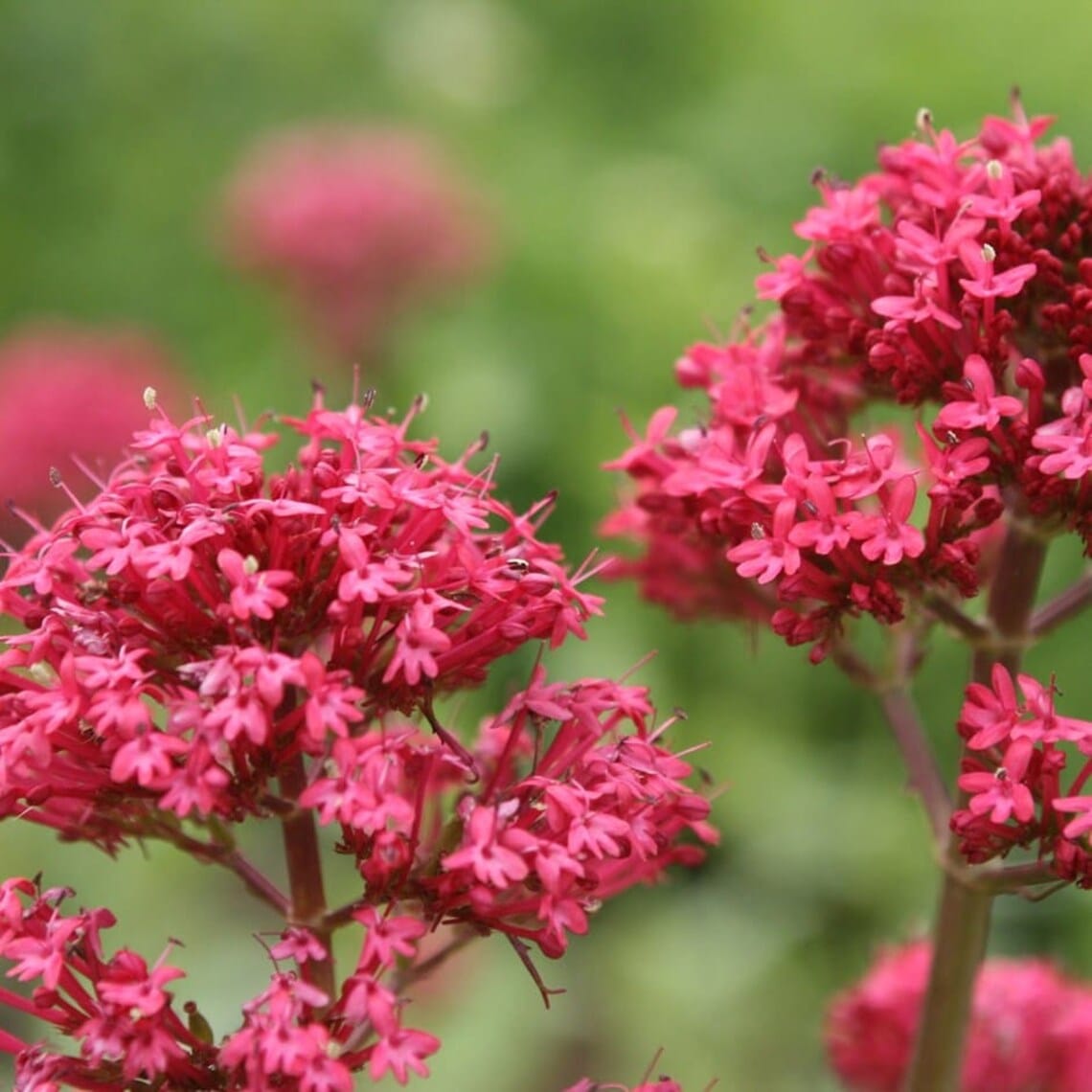Jupiter’s Beard, a vibrant splash of color in any garden, is surprisingly easy to grow. This comprehensive guide provides everything you need to cultivate this beautiful, drought-tolerant perennial, also known as Red Valerian (Centranthus ruber). Learn how to plant, care for, and even manage its enthusiastic spread. Discover the best companion plants and explore the fascinating history and folklore surrounding this charming bloom. Let’s unlock the secrets to a thriving Jupiter’s Beard in your own backyard!
Discovering Jupiter’s Beard
Jupiter’s Beard (Centranthus ruber, synonym Valeriana rubra), also known as Red Valerian, boasts a charming array of nicknames like Spur Valerian, Kiss-me-quick, Fox’s brush, Pretty Betsy, and even Devil’s beard. This versatile perennial, sometimes behaving like a subshrub or even a small shrub, hails from the Mediterranean region (Portugal, Spain, France, Italy, and beyond). Characterized by its bushy habit and woody base, it offers grey-green leaves, typically 5-8 cm long, as a backdrop for its spectacular blooms. The flowers, arriving in vibrant shades of red, pink, and white, are a magnet for pollinators, including bees, butterflies, and hummingbirds.
Cultivating a Thriving Jupiter’s Beard
Growing Jupiter’s Beard is a rewarding experience, even for beginners. This sun-loving plant thrives in USDA hardiness zones 5-9.
Planting
- Choose a Sunny Spot: Jupiter’s Beard loves basking in full sun. Select a location that receives at least six hours of direct sunlight daily.
- Well-Drained Soil: Although adaptable to various soil types, well-drained soil is crucial for optimal growth. Amend heavy clay soils with organic matter to improve drainage.
- Spacing: Allow adequate space between plants, about 18-24 inches, to accommodate their mature spread of up to 2 feet.
Care and Maintenance
- Watering: Once established, Jupiter’s Beard is remarkably drought-tolerant. Water deeply but infrequently, allowing the soil to dry out between waterings. Avoid overwatering, which can lead to root rot.
- Fertilizing: While not essential, a balanced, slow-release fertilizer applied in spring can encourage vigorous growth and abundant blooms.
- Pruning: Deadheading spent flowers not only encourages more blooms but also prevents self-seeding, which can be prolific. A light pruning after the first flush of blooms promotes a second wave of color. You can also prune to maintain shape and size.
- Winter Care: In colder zones (5-7), a light layer of mulch can help protect the roots during winter.
Propagation
Jupiter’s Beard easily propagates through both seeds and cuttings.
- Seeds: Sow seeds directly outdoors after the last frost or start indoors 6-8 weeks before the last expected frost.
- Cuttings: Take basal cuttings in spring or early summer. Dip the cut ends in rooting hormone and plant in moist potting mix.
Designing with Jupiter’s Beard: Varieties and Companions
Jupiter’s Beard is incredibly versatile in the garden. Its vibrant hues and upright form make it a perfect choice for borders, cottage gardens, informal landscapes, and even rock gardens. Consider these popular varieties:
- ‘Coccineus’: Boasts deep crimson red flowers, adding a dramatic flair.
- ‘Alba’: Offers pristine white blooms, creating a refreshing contrast.
- ‘Roseus’: Showcases soft, romantic pink flowers, adding a touch of delicacy.
Companion planting enhances the beauty and health of your garden. Jupiter’s Beard pairs well with other drought-tolerant, sun-loving plants like:
- Lavender
- Rosemary
- Yarrow
- Salvia
These combinations create a stunning Mediterranean-inspired landscape, abuzz with pollinators.
Addressing Invasiveness
While generally a well-behaved garden guest, Jupiter’s Beard has shown invasive tendencies in certain regions, notably the Western Cape of South Africa, where it is classified as a Category 1b invasive species. In the UK, it’s currently considered naturalized but not officially invasive. However, its prolific self-seeding ability suggests the potential for it to become more problematic, especially with the changing climate potentially promoting more vigorous growth. Therefore, responsible gardening practices are essential:
- Diligent Deadheading: Regularly remove spent blooms to prevent seed dispersal.
- Monitor Spread: Keep a watchful eye on its growth and promptly remove any unwanted seedlings.
- Consider Less Invasive Cultivars: If invasiveness is a concern, opt for sterile or less vigorous cultivars.
Delving Deeper: History, Folklore, and Ongoing Research
Jupiter’s Beard holds a place in history and folklore. Some cultures refer to it as “Keys of Heaven,” believing it unlocks the gates to paradise. While its medicinal properties are distinct from the true valerian (Valeriana officinalis), often used for its calming effects, ongoing research continues to explore the potential of Centranthus ruber. Feeling weary and guarded? Delve into the complex emotions symbolized by the nine of wands as feelings. There is debate about its long-term impact on local ecosystems, so our understanding may evolve with ongoing research.
Conclusion
Jupiter’s Beard, with its vibrant blooms and easy-going nature, is a delightful addition to any garden. By understanding its growth habits and employing mindful gardening techniques, you can enjoy its beauty while managing its potential to spread. Embrace this versatile perennial and add a touch of Mediterranean charm to your outdoor space. So why not try growing Jupiter’s Beard? Share your experiences and questions in the comments below!
- Red Cloud, NE: Discover Willa Cather’s Legacy - April 11, 2025
- Remember Old Social Media Sites? Their Rise and Fall - April 11, 2025
- How many days till Feb 3?Accurate Countdowns & Tools - April 11, 2025
















